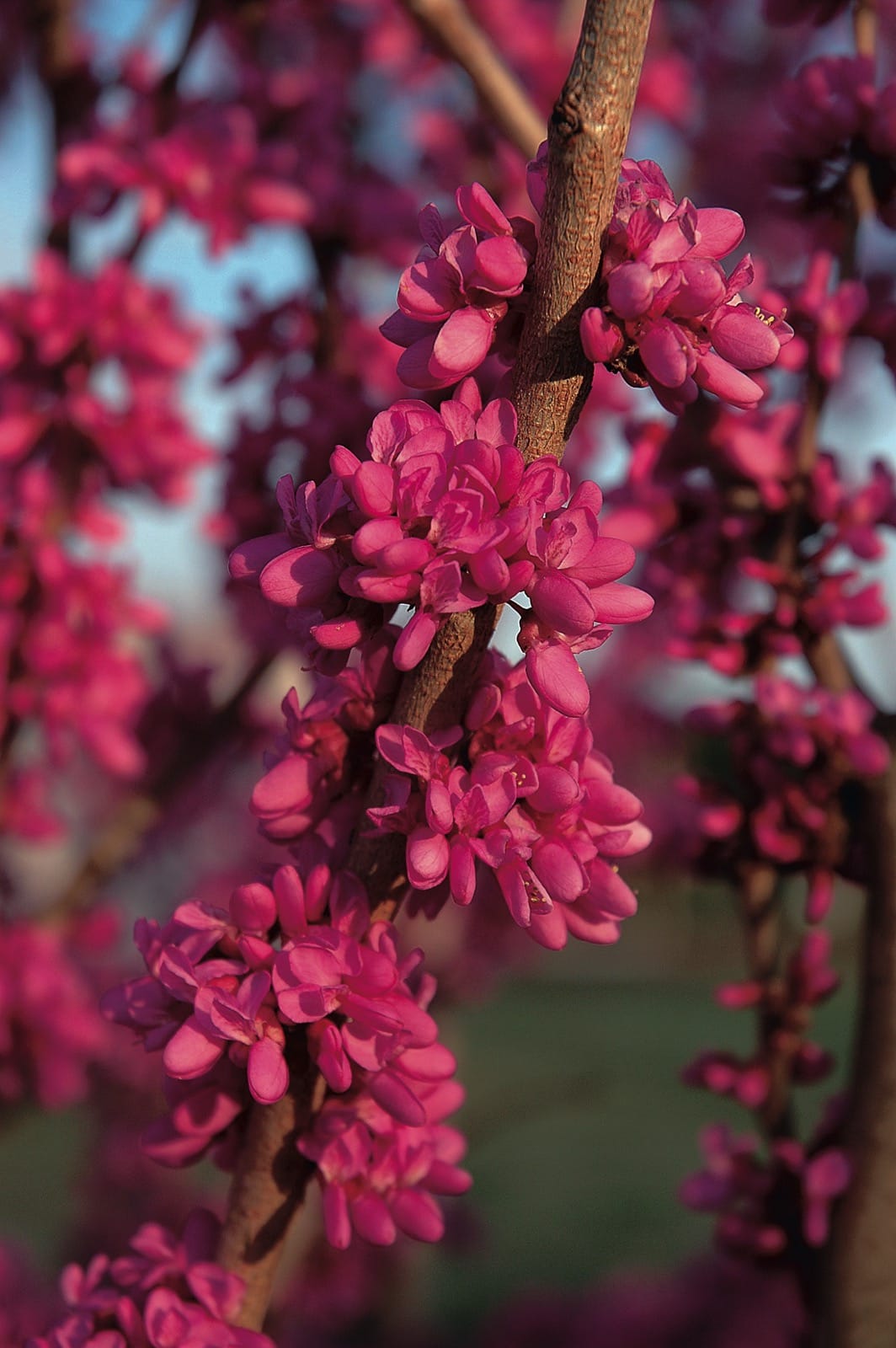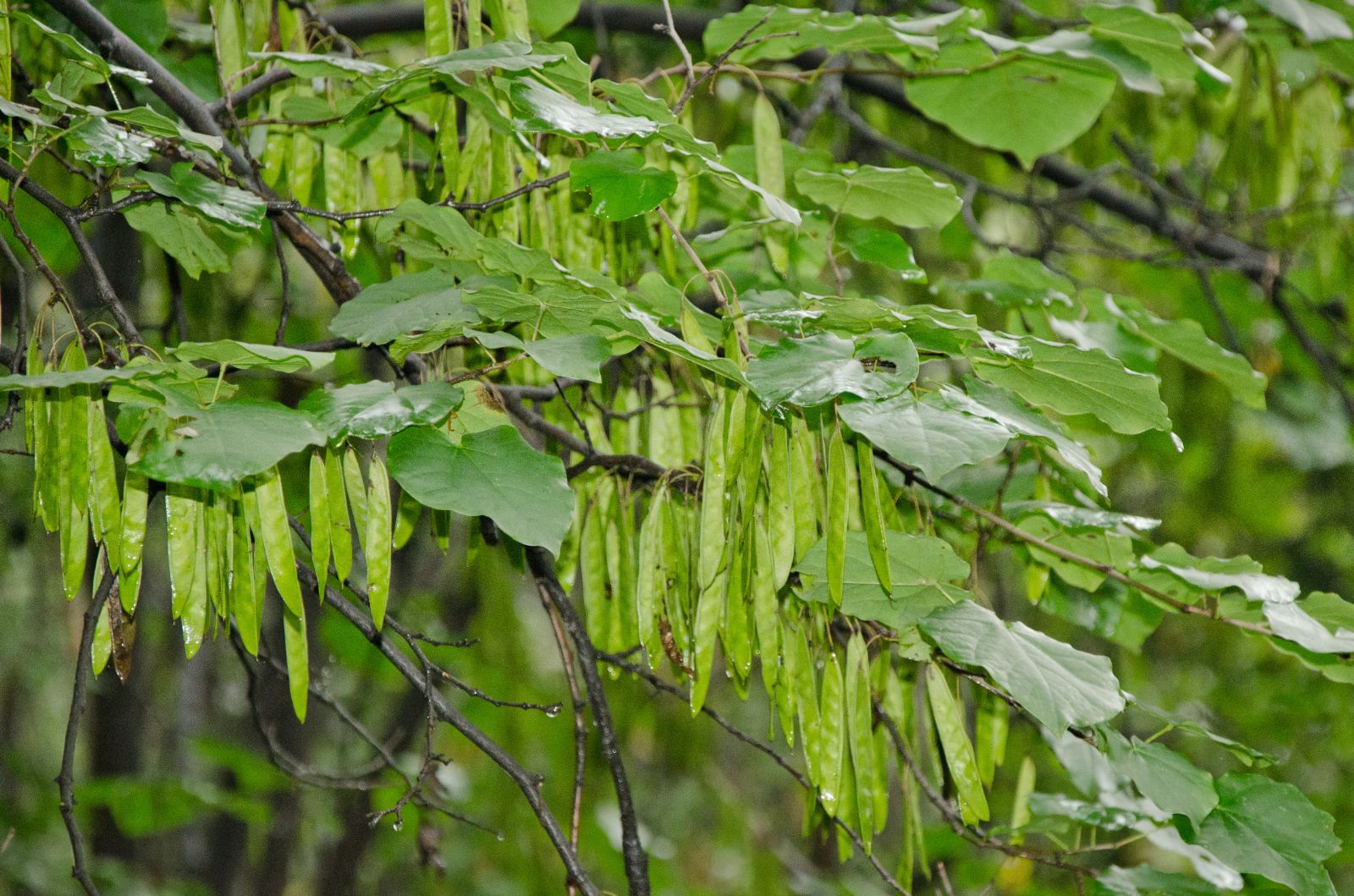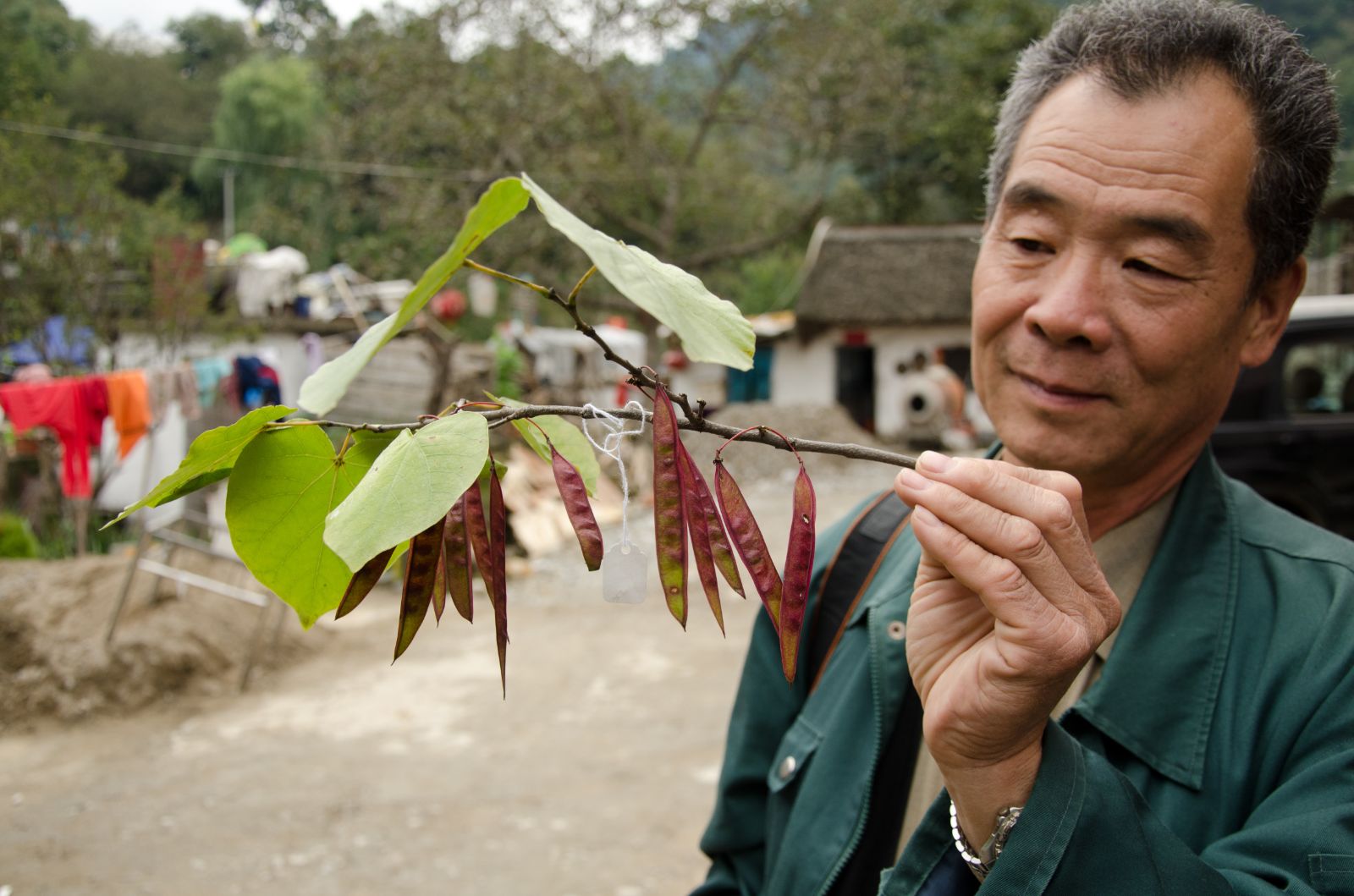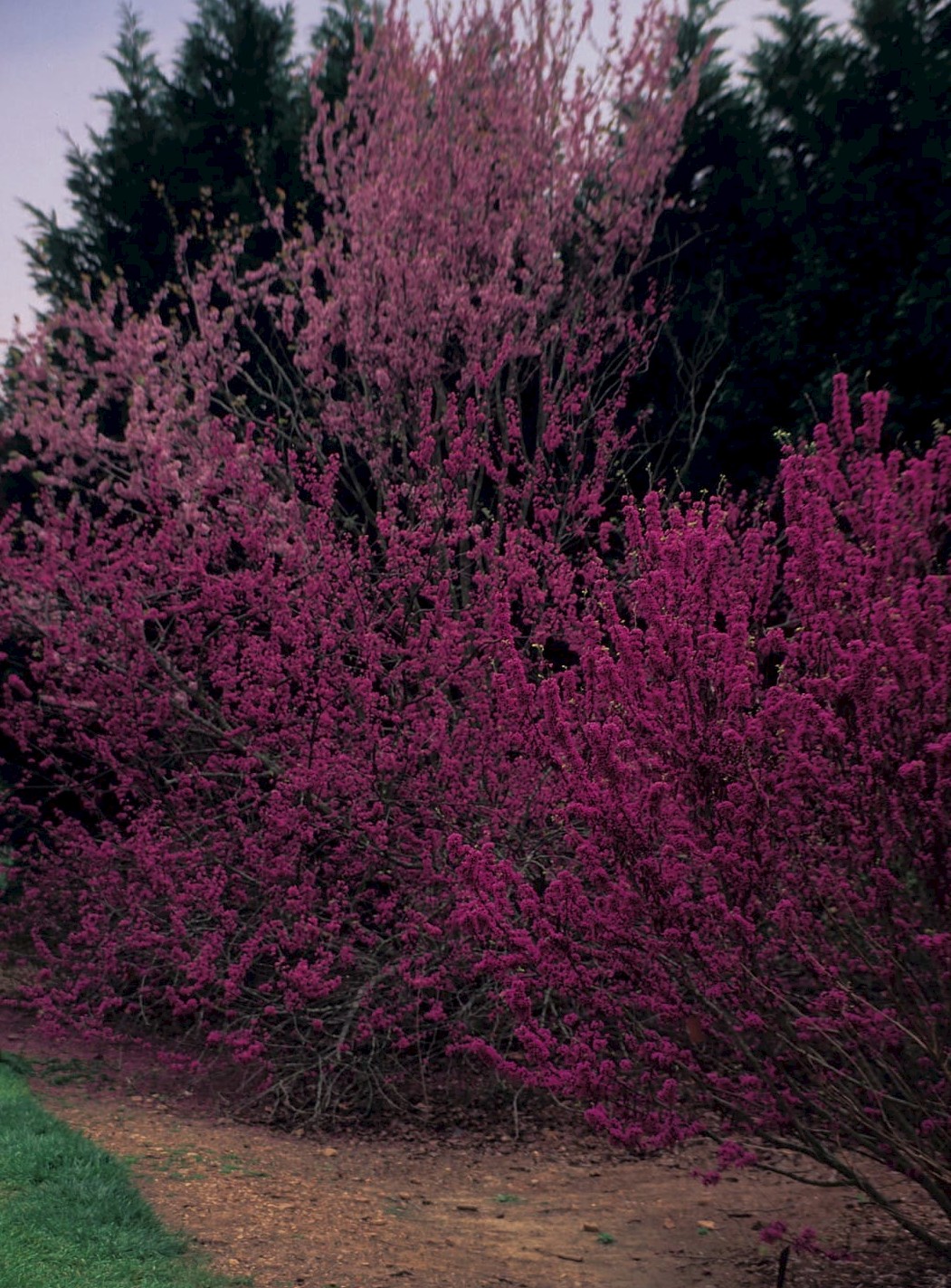Cercis glabra
Credits
Article from New Trees by John Grimshaw & Ross Bayton
Recommended citation
'Cercis glabra' from the website Trees and Shrubs Online (treesandshrubsonline.
Genus
Synonyms
- C. yunnanensis Hu & Cheng
Tree to 6–16 m, 30 cm dbh. Branchlets dark. Leaves thickly papery to almost leathery, somewhat circular or rounded to reniform, 5–12 × 4.5–11 cm, glabrous or with tufts of hairs in vein axils below, major veins usually seven, inconspicuous, minor veins on lower surface reticulate, cordate at base, apex acuminate; petiole glabrous, 2–4.5 cm long. Inflorescence a short axillary raceme, 5–10 mm, bearing 2–10 flowers (or more). Flowers pink, to 1.5 mm long, and similar to those of other Cercis species. Fruit 9–14 1.2–1.5 cm, sutures unequal, with broad wing to 2 mm, apex acuminate, seeds one to eight. Flowering March to April, fruiting September to November (China). Pampanini 1910, Raulston 1986, Dezhao et al. 2008. Distribution CHINA: Anhui, Guangdong, Guangxi, Guizhou, Henan, Hubei, Hunan, Shaanxi, Sichuan, Yunnan, Zhejiang. Habitat Forests on slopes, between 600 and 1900 m asl. USDA Hardiness Zone 7–8 (?). Conservation status Not evaluated. Illustration NT240, NT245.
Once again, there is a big problem in reconciling cultivated material labelled C. glabra with the descriptions of the species as a wild tree. For example, a tree at the US National Arboretum labelled Cercis glabra (NA 69139), grown from material received from the Xian Botanical Garden in 1998, was noted in 2006 to be indistinguishable from an adjacent ‘C. gigantea’ (NA 65489). This was checked (in 2007) by Richard Olsen, and he too could find no points of difference, with the fruits in both being clustered and not racemose. The name appears in collection lists of other American arboreta, but plants need individual checking to confirm their identities.
The name C. yunnanensis is applied as a synonym in the Flora of China account (Dezhao et al. 2008) but this has rung some alarm bells in the United States, where plants labelled C. yunnanensis are frequently cultivated (Dirr 1998). These tend to be rather densely pubescent (the hairiest of all redbuds, according to Todd Lasseigne, pers. comm. 2007), while the Flora of China account suggests that the only hairs on C. glabra should be confined to tufts in the vein axils on the undersides of the leaves.




